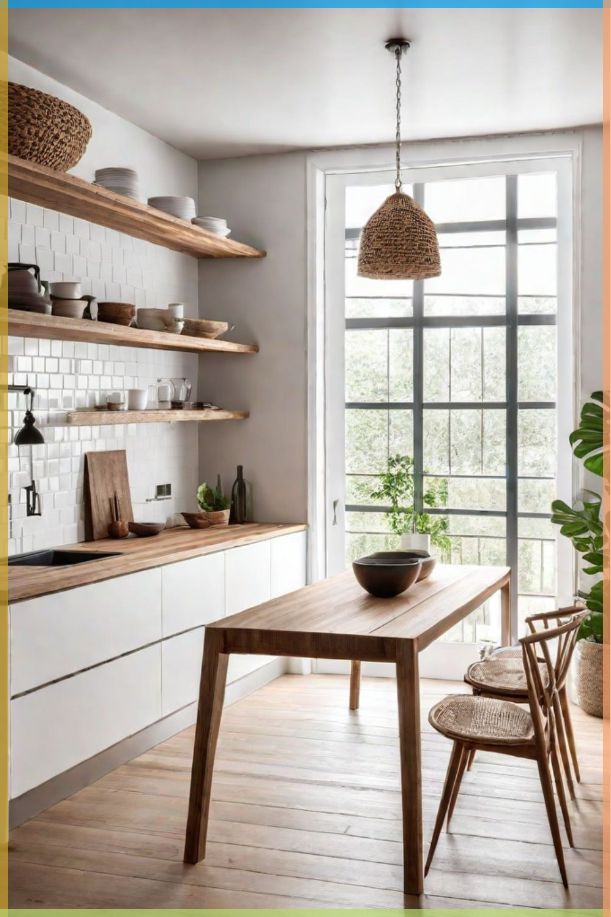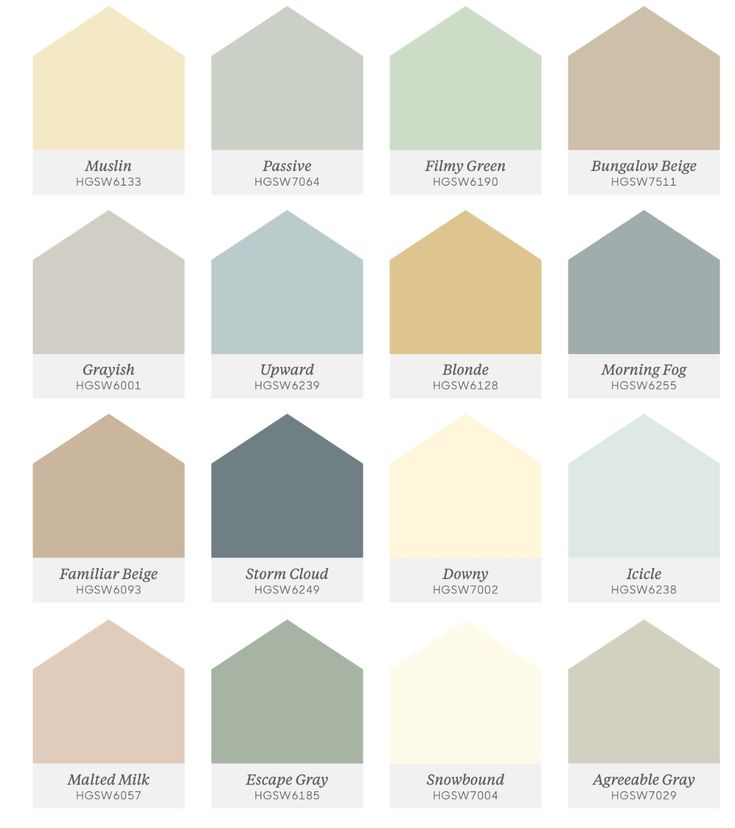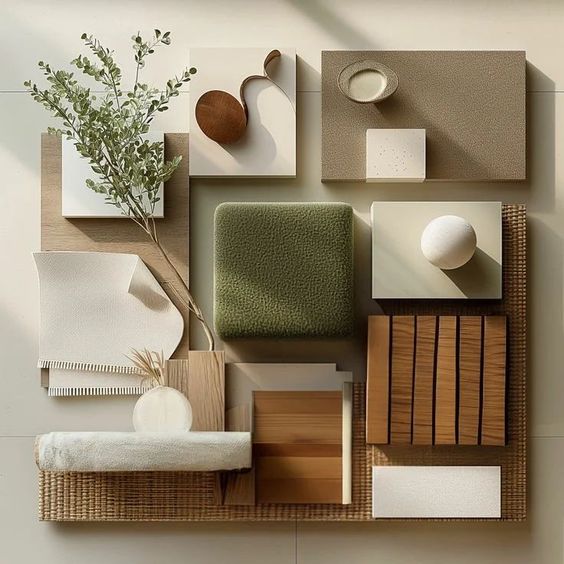Scandinavian decor is a design style that emphasizes simplicity, functionality, and minimalism. It is characterized by clean lines, neutral colors, and an emphasis on natural materials. The key to achieving this aesthetic lies in creating a harmonious and uncluttered space that prioritizes both comfort and functionality.


In Scandinavian interiors, light plays a crucial role. Bright, airy spaces are often achieved through large windows and the use of light colors, which help to enhance the natural sunlight, especially in regions where daylight is scarce during winter months. This approach not only improves the ambiance but also reflects the Scandinavian philosophy of bringing the outside in.
Incorporating Scandinavian decor into a home is accessible for anyone looking to refresh their living space. By focusing on quality over quantity and integrating elements such as selected furniture, textiles, and decor items, individuals can easily transform their environments into serene, stylish retreats that evoke the soothing essence of Northern Europe.
History and Origins of Scandinavian Decor


Scandinavian decor has rich historical roots that reflect the region’s cultural heritage and aesthetic principles. The development of this style was significantly shaped by Nordic culture and the rise of modernism, which emphasized simplicity and functionality.
Influence of Nordic Culture
The origins of Scandinavian decor are deeply intertwined with the traditions of the Nordic countries. Characteristics such as minimalism and natural materials often stem from a close relationship with nature.
Key Elements:
- Materials: Wood, stone, and textiles are frequently used, reflecting the natural surroundings.
- Colors: A palette dominated by whites, grays, and earthy tones conveys simplicity and tranquility.
Folk art is also vital, inspiring patterns in textiles and ceramics. This cultural backdrop created a foundation for a design philosophy rooted in harmony and practicality.
Modernism and Functionality
In the early 20th century, Scandinavian decor evolved with the rise of modernist principles. Designers began prioritizing functionality alongside aesthetics, leading to innovative furniture and home goods.
Notable Features:
- Clean Lines: A focus on geometric shapes and uncluttered spaces promotes a sense of calm.
- Multi-functionality: Furniture pieces often serve more than one purpose, catering to smaller living spaces.
This era saw iconic figures such as Arne Jacobsen and Alvar Aalto, whose works exemplified these principles. Their creations were not only beautiful but also practical, solidifying the reputation of Scandinavian design as both stylish and functional.
Key Principles of Scandinavian Design

Scandinavian design is characterized by its commitment to functionality and aesthetics. Key principles include simplicity, natural light, practical design, and a muted color palette, which together create a harmonious environment.
Simplicity and Minimalism
Simplicity is at the core of Scandinavian design, focusing on clean lines and uncluttered spaces. The idea is to create a sense of calm by removing excessive ornamentation. Furniture and decor pieces often exhibit minimal detailing but are crafted with high-quality materials, emphasizing craftsmanship.
The minimalist approach extends beyond aesthetics. It promotes a lifestyle that values experiences over possessions. When selecting décor, less is often more, allowing for breathing space in interior layouts. This principle encourages careful selection of each item so that each contributes meaningfully to the overall ambiance.
Emphasis on Natural Light


Natural light plays a crucial role in Scandinavian decor. Given the region’s long winters and limited daylight, incorporating as much natural light as possible is essential. Designers often utilize large windows and open spaces to enhance the brightness of a room.
In addition to maximizing natural light, this principle often includes the use of light-colored walls and reflective surfaces. The aim is to create an airy, inviting atmosphere that feels connected to nature. This design choice not only makes the environment feel larger but also promotes mental well-being.
Function Over Form
Functionality is prioritized in Scandinavian design without sacrificing aesthetics. Furniture is designed to be both beautiful and practical, ensuring that every item serves a purpose. Multi-functional pieces are common, making clever use of space, especially in smaller homes.
Storage solutions are seamlessly integrated into the design, which helps maintain a tidy environment. Whether it’s a stylish ottoman that doubles as storage or modular shelving systems, practicality is always a key consideration. This focus on functional design aligns with a lifestyle that values efficiency and simplicity.
Neutral Color Palettes
Neutral color palettes are a staple in Scandinavian design. Shades like white, gray, beige, and earthy tones create a serene and soothing environment. These colors reflect light and enhance the sense of spaciousness while providing a versatile backdrop for decor.
Accent colors may appear but are typically used sparingly. Natural materials, such as wood and stone, often contribute organic tones that add warmth to the space. The overall effect is a cohesive, welcoming setting that invites relaxation and comfort while remaining elegant and stylish.
Material and Texture in Scandinavian Decor

Scandinavian decor emphasizes the importance of natural materials and textures, contributing to its unique aesthetic. Key elements include wood, metals, and textiles that foster warmth and simplicity while ensuring functionality.
Wood and Its Usage


Wood is a fundamental material in Scandinavian design, celebrated for its warmth and beauty. Commonly used types include birch, pine, and oak, each chosen for their durability and natural grain patterns.
Furniture often features clean lines and minimalistic shapes, showcasing the wood’s inherent qualities. Items like tables, chairs, and shelving are commonly crafted from solid wood to promote sustainability and authenticity.
Techniques such as light staining or whitewashing highlight the natural textures while maintaining a fresh, airy feel. Wood accents are also prevalent in decor items, tying together various elements in a cohesive manner.
Incorporation of Metals
Metals play a crucial role in adding contrast and modernity to Scandinavian decor. Finishes often include brushed brass, stainless steel, and matte black, which serve both functional and decorative purposes.
Lighting fixtures, such as pendant lamps and floor lamps, frequently feature metal components. These not only provide illumination but also enhance the overall aesthetic with their sleek designs.
In furniture, metal legs or frames can provide structural integrity while complementing wooden surfaces. Using metal sparingly allows for striking visual interest without overwhelming the natural elements present in the space.
Textiles and Fabrics


Textiles are essential for adding softness and warmth to Scandinavian interiors. Commonly used materials include wool, linen, and cotton, which contribute to a cozy, inviting atmosphere.
Curtains, cushions, and throws often feature neutral palettes with subtle patterns or textures. This simple approach aligns with the design philosophy of making spaces feel comfortable yet stylish.
Area rugs add warmth underfoot and can define different areas within an open-plan space. Layering textiles in various dimensions enhances depth and invites tactile experiences for residents and visitors alike.
Scandinavian Furniture Design


Scandinavian furniture design is characterized by simplicity, functionality, and minimalism. These elements combine to create visually appealing and practical pieces that highlight craftsmanship and quality.
Iconic Furniture Pieces
Several iconic furniture pieces define Scandinavian design. The Egg Chair, designed by Arne Jacobsen in 1958, blends form and function with its unique shape and comfortable upholstery. Another notable piece is the Finn Juhl’s Chieftains Chair, recognized for its elegant lines and fusion of artistry with practical use. The Fritz Hansen Series 7 chair, designed by Arne Jacobsen, remains a classic example of functional design that complements various interiors.
These pieces not only serve practical purposes but also showcase the beauty of minimalism, reflecting the ethos of Scandinavian living. Their influence can be seen in contemporary designs as they balance aesthetics with utility.
Innovative Use of Materials
Scandinavian furniture often showcases innovative material choices. Designers commonly utilize natural materials such as wood, leather, and wool, which connect the products to nature and provide warmth. Utilizing sustainable resources reflects a growing trend towards environmental responsibility in design.
Manufacturers focus on lightweight materials, making furniture easy to move and adapt within living spaces. The use of bent plywood and molded plastics also emphasizes unique shapes while maintaining durability. This intentional selection of materials contributes significantly to both the aesthetic and functional qualities found in Scandinavian furniture.
Craftsmanship and Durability
Craftsmanship is a cornerstone of Scandinavian furniture design. Skilled artisans prioritize quality, ensuring that each piece is made with precision and care. This attention to detail results in furniture that not only looks good but is built to last.
Durability is paramount, as many designs incorporate timeless styles that withstand changing trends. The emphasis on craftsmanship also means that these pieces often improve with age, developing character over time. Investment in Scandinavian furniture typically yields long-lasting results, making it a valued choice for consumers seeking quality and elegance.
Color Schemes and Palette


Scandinavian decor emphasizes simplicity and functionality, which extends to its color schemes. The palette typically incorporates natural colors that provide a calm and inviting atmosphere. Understanding the key elements of monochromatic, earthy tones and the strategic use of accent colors enhances the aesthetic appeal.
Monochromatic and Earthy Tones
Monochromatic schemes utilize variations of a single color, promoting a sense of harmony. Shades of white, gray, and beige dominate Scandinavian design, creating a soothing environment.
Earthy tones represent nature, showcasing browns, greens, and soft blues. These colors evoke a connection to the outdoors, integral to the Scandinavian lifestyle.
The use of these tones relies on texture and materials, such as wood and textiles, to add depth. This approach complements the overall design philosophy of minimalism and functionality.
Accent Colors and Their Roles
Accent colors play a crucial role in Scandinavian decor by adding vibrancy and interest to the neutral base. Common accent colors include muted pastels or bold hues like deep navy and mustard yellow.
Incorporating these colors can be achieved through accessories like cushions, rugs, and artwork. This strategy creates focal points without overwhelming the space.
Balanced placement of accents contributes to an inviting ambiance. Ensuring harmony between the accents and the prevailing earthy tones maintains the overall aesthetic integrity essential to Scandinavian design.
Lighting in Scandinavian Interior Design


Lighting plays a critical role in Scandinavian interior design, emphasizing functionality while maintaining aesthetic appeal. The use of both artificial and natural light is key in creating inviting spaces that enhance the overall ambiance.
Pendant Lights and Lamps
Pendant lights are a staple in Scandinavian design, often combining sleek lines with a minimalist approach. Popular materials include metal, glass, and wood, which contribute to the functional yet stylish ambiance.
Key features of Scandinavian pendant lights include:
- Simple Forms: Many designs focus on geometric shapes that do not overwhelm the space.
- Adjustable Options: Some pendant lamps offer adjustable heights, allowing for customized lighting experiences.
- Warm Bulbs: Soft, warm light bulbs are preferred to create a cozy atmosphere.
Table lamps are equally important, often seen on side tables and desks. Their designs frequently mirror the minimalist aesthetic, enhancing the room’s visual flow.
Natural Lighting Solutions
Maximizing natural light is fundamental in Scandinavian decor, as it contributes to the warmth and openness of the interior. Large windows are commonly used to allow ample sunlight during the day.
Key strategies for enhancing natural light include:
- Light-colored Walls: White or pastel hues reflect sunlight, brightening living spaces.
- Mirror Placement: Strategically placed mirrors can amplify light by reflecting it throughout the room.
- Uncluttered Spaces: A minimalist approach promotes airflow and prevents the obstruction of light.
Curtains and window treatments are typically sheer or light-filtering, allowing sunlight in while maintaining privacy. This focus on natural lighting fosters a connection with the outdoors, essential to Scandinavian design.
Influence of Scandinavian Decor on Modern Interior Design


Scandinavian decor has significantly shaped modern interior design practices. Its emphasis on minimalism, functionality, and connection to nature resonates with contemporary design sensibilities.
Key principles of Scandinavian decor include:
- Minimalism: A focus on simplicity creates uncluttered spaces.
- Functionality: Furniture and design elements are practical and versatile.
- Natural Materials: Wood, stone, and textiles enhance a cozy atmosphere.
Color palettes feature soft, neutral tones, enhancing light and space. White is prevalent, often paired with muted hues and occasional pops of color.
The concept of “Hygge,” which emphasizes comfort and coziness, is integral. This trend encourages warm lighting, soft textiles, and a sense of well-being in interiors.
Open floor plans are also a hallmark of Scandinavian design. This layout promotes ease of movement and a sense of community in homes.
Sustainable design practices are emphasized, leading to a rise in eco-friendly materials and techniques. Consumers increasingly prioritize sustainability in their choices.
The influence of Scandinavian decor is evident in furniture design as well. Iconic pieces from designers like Arne Jacobsen and Hans Wegner remain popular today.
As modern interior design continues to evolve, the principles of Scandinavian decor provide a timeless foundation that influences trends globally.
Sustainability and Eco-Friendliness


Scandinavian decor places a strong emphasis on sustainability and eco-friendliness. This design philosophy encourages using materials that are natural, renewable, and local.
Key Principles:
- Materials: Preference for wood from sustainably managed forests, organic textiles, and natural stones.
- Design: Focus on timeless designs that reduce the need for frequent replacements.
- Energy Efficiency: Architecture often incorporates large windows for natural light, minimizing energy costs.
Many Scandinavian brands prioritize environmental responsibility. They practice reducing waste through efficient production methods.
Examples of Eco-Friendly Practices:
| Practice | Description |
|---|---|
| Upcycling | Transforming old materials into new items. |
| Sustainable Sourcing | Choosing suppliers that adhere to eco standards. |
| Minimalism | Reducing clutter and unnecessary consumption. |
This commitment to sustainability not only reflects a cultural value but also encourages consumers to make environmentally conscious decisions.
In Scandinavian decor, eco-friendliness is not just a trend; it is a vital aspect of creating a harmonious living space.
Notable Scandinavian Designers and Architects


Scandinavian design is marked by simplicity and functionality. Several influential designers and architects have shaped this aesthetic.
Alvar Aalto was a Finnish architect known for his modernist buildings. His work often integrated natural forms and materials, exemplified in the Paimio Sanatorium.
Hans Wegner is famous for his iconic furniture designs. The Wishbone Chair stands out as a symbol of Danish craftsmanship and ergonomic design.
Greta Grossman was a Swedish designer and architect who contributed significantly to mid-century modern design. Her lighting fixtures, especially the Grasshopper lamp, are celebrated for their innovative style.
Arne Jacobsen played a crucial role in Danish design. The Egg Chair and Swan Chair showcase his commitment to organic shapes and functionality.
Marianne Brandt was a pioneer in metal design at the Bauhaus. Her tea infuser remains a classic example of streamlined functionality.
Other notable names include:
- Tord Boontje: Known for his romantic and nature-inspired designs.
- Eero Saarinen: Recognized for his sculptural furniture and airport terminal designs.
These designers and architects emphasize the principles of minimalism, functionality, and natural beauty. Their works continue to inspire contemporary designers around the world.
Frequently Asked Questions
Scandinavian decor focuses on simplicity, functionality, and a connection to nature. These principles cater to various spaces, including living rooms and bedrooms, while offering distinctive characteristics that set it apart from other design styles.
To achieve Scandinavian decor in a living room, one should prioritize neutral color palettes, such as whites, grays, and earthy tones. Incorporate natural materials like wood and textiles and focus on minimalist furniture that offers both comfort and functionality.
Essential characteristics of Scandinavian interior design include ample natural light, open spaces, and a blend of form and function. Additionally, textures play a key role, using textiles like wool and linen to add warmth and coziness.
Scandinavian decor is distinguished by its emphasis on minimalism and practicality, often featuring sleek lines and a lack of excess ornamentation. Unlike other styles, it favors a light and airy feel achieved through color choices and furniture layout.
Incorporating Scandinavian decor in a bedroom can include using a light color scheme with soft textiles, such as a cozy quilt or linen sheets. Simple, functional furniture like a platform bed and minimalistic nightstands can enhance the clean aesthetic.
Authentic Scandinavian home decor items can be found at specialized retailers and online stores that focus on Nordic design. Popular options include stores like IKEA, Muji, and Scandinavian Imports, which offer a variety of home goods reflecting true Scandinavian style.
When selecting Scandinavian furniture, look for designs that emphasize simplicity and functionality. Focus on high-quality materials, including wood and metal, and choose pieces with clean lines. Consider scale and proportion to ensure a balanced look in your space.
- 947shares
- Facebook0
- Pinterest947
- Twitter0
- Reddit0













